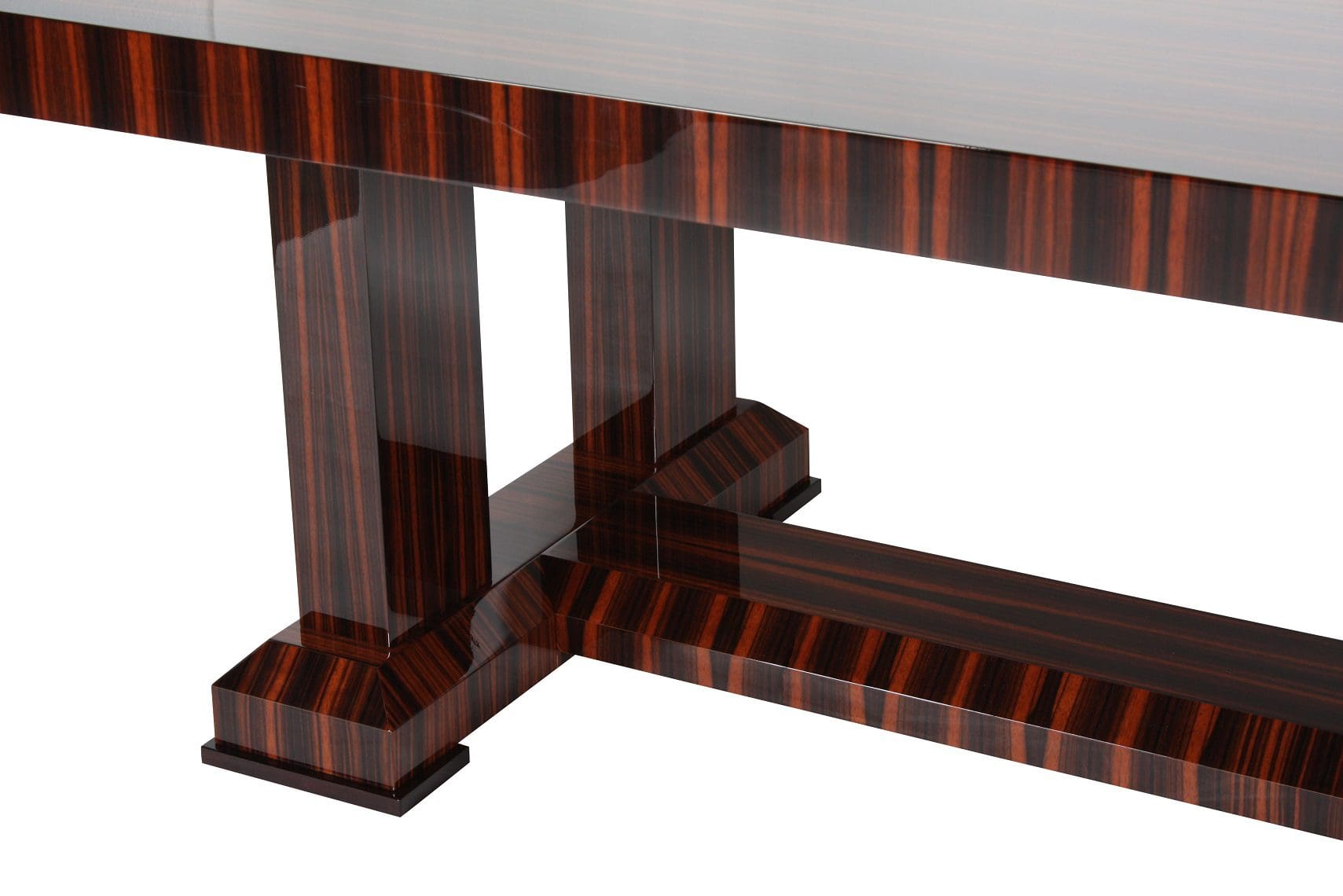Macassar Ebony

Scientific Names
Diospyros celebica or Diospyros macassar of the Family Ebenaceae. The rough translation of Diospyros is “fruit of the gods.”
Other Names
Macassar ebony, Indian ebony, marble wood, coromandel, calamander wood, tendu, temru, tunki, timbruni.
Ebony is a collective trade name given to all species of Diospyros, which have a predominately black heartwood, by contrast to the North American white ebony, also known as persimmon. Macassar ebony from Indonesia is more variegated still. With a heartwood that is dark brown to black interspersed with contrasting bands of yellow to golden brown, Macassar ebony yields a bold and attractive look by offsetting the darkest of the dark woods with a variety of color.
The name Macassar is most likely from the famous Macassar seaport on the islands. Some retailers have used the term Macassar ebony for any ebony that has a high contrast of light and dark streaks, although most people today limit the term to the species Diospyros celebica.
Properties
Macassar ebony is a prized wood. Its uses include high-end furniture and cabinetry, inlay work, musical instruments, billiard cues and other specialty items like jewelry boxes or walking sticks. Its sapwood, which is not brittle, is used to make tool handles. The wood is also a good choice for turnery. Macassar ebony can be difficult to work with hand or machine tools if the material is brittle. Hardness of the wood contributes to blunting of cutting edges. Pre-boring is recommended for nailing. Wood can be difficult to glue, but has a natural luster and finishes extremely well. Timber can be difficult to dry, with slow, careful drying recommended to avoid checking. Wood should be stored covered to avoid sun damage. Wood has small movement in service.
Challenges and Rewards
Most forms of ebony offer challenges to users due to the innate hardness of the material. Early on, the wood was sliced for veneer and glued to oak or pine, which was not only less expensive, but easier to work. The process of veneering was common in France, where woodworkers were credited with perfecting early veneering techniques with ebony for furniture and cabinetry. In France, cabinetmaking was even called “ebenisterie” and the French name for a cabinetmaker is “ebeniste.”
Height and Weight
Average height is 50 feet. Average weight is 68 pounds per cubic foot with a specific gravity of 1.09
The trees are native to the lowland rain forest of the East Indies Islands called Celebes or Sulawesi, and are also found in Maluku and Borneo, known as the Greater Sunda Islands of Indonesia.
Macassar is red listed for vulnerability for extinction since 1998 due to having been heavily exploited for its fine streaked ebony timber. The number of mature trees has declined and large parts of the habitat have been converted to crops. Due to conservation actions and efforts felling of the species is now only allowed by quota but unfortunately continues illegally.
